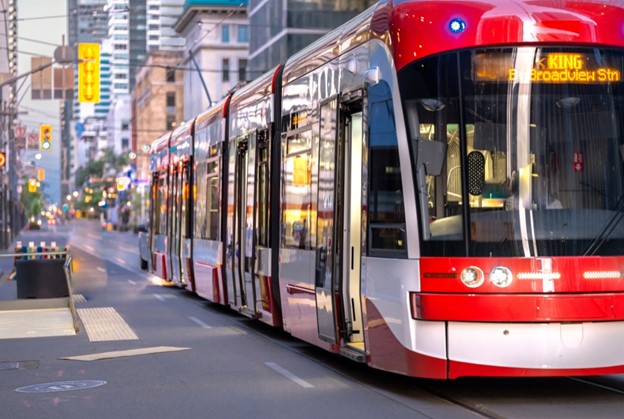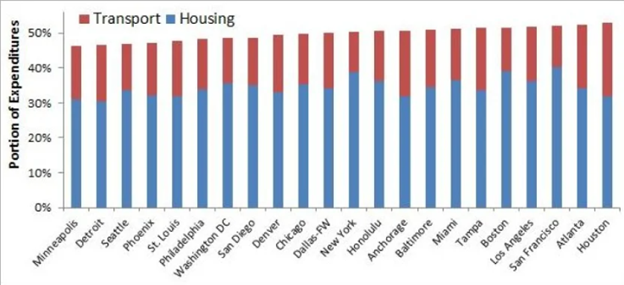Why Transportation and Affordable Housing Are Inextricably Tied

Why Transportation and Affordable Housing Are Inextricably Tied
By Jerome Ryans, President & CEO Tampa Housing Authority
Historically, affordable housing has meant exactly that - creating living spaces that enable residents to pay no more than 30 percent of their monthly budget on housing. At first glance, this sounds reasonable. After all, if your goal is to provide people with an affordable place to live, it makes sense to focus on the price of housing, right?
But if your actual goal is to make living affordable, it turns out that you have to take a step back and think about what "an affordable place to live" really means. Is it simply the living space itself - the housing unit that people return to each evening? What about other necessities that people require to live and thrive?
Over time, what experts have discovered is that it does no good to create housing that is affordable - often at the very fringes of urban development - if the lower-income people who will be living there then have to pay more to commute to work, shop, or obtain necessities. In other words, you need to take both affordable housing and transportation into account.
You can see that very bind at work in this chart. Despite having two of the lowest housing costs of any cities on the list, Atlanta and Houston are actually more expensive for people once you factor in the price they pay to get around:

(Source: 2016 Consumer Expenditure Survey, U.S. Bureau of Labor Statistics)
Any plan to create housing designed for those with smaller budgets must absolutely make transportation and distance to necessary amenities a big part of the equation.
Enter the H+T® Affordability Index
To break it down even further, if you only use the 30 percent housing-cost benchmark to determine affordability, more than half of U.S. neighborhoods qualify. However, if you add in transportation costs - generally the second most expensive item in a household's budget - that number plummets to 26 percent.
The H+T Index aims to redefine true affordability by combining both costs - affordable housing and transportation - and capping them at no more than 45 percent of a household's income. Their data covers areas that encompass around 94 percent of the population in the U.S., so it can be incredibly useful in determining how to create genuinely affordable housing for people who need it.
Capping housing and transportation costs leaves us with two options: create housing options that are even less expensive, or find ways to reduce transportation costs. With building costs continuing to rise, it is difficult to see a path forward in regards to reducing the actual price of housing - at least in a bigger picture way. Lowering transportation costs, however, is definitely possible.
In fact, the Index specifically mentions that one of the most valuable ways to do this is through the creation of location-efficient neighborhoods.
What Is a Location-Efficient Neighborhood?
The name itself probably gives you some clues. Quite simply, they are compact spaces with convenient access to everything that someone might need. Within a relatively small distance, there are available jobs, amenities, services, and transit options.
Why does this matter? Because it significantly lowers required transportation paid by a household in order to reach the everyday essentials that they need.
Imagine being able to walk or bike to work or the grocery store. Imagine living with close access to schools, healthcare, shopping, libraries, and so on. This is a movement that has been picking up steam in recent decades for all kinds of reasons, and it stands to benefit people from all walks of life.
Perhaps even better, there are built-in ways to make sure that affordable housing plays a large role in these neighborhoods.
Subsidized Affordable Housing as Well as Naturally-Occurring Affordable Housing
Location-efficient neighborhoods, by their very nature, require relatively dense residential spaces in order to support the various amenities mixed in with the residential areas. Put another way, those businesses can only stay in business if enough people are using them.
Here's how this matters for affordable housing.
When most people think of affordable housing, they imagine apartment complexes where the government agrees to pay part of the tenant's rent in order to keep their cost below a certain level. This is traditional subsidized housing.
Location-efficient neighborhoods will certainly have housing like this. However - provided they are zoned for it - they also offer an opportunity for other types of affordable housing: multifamily homes, such as townhomes, duplexes, triplexes, and so on, as well as condominiums and apartment complexes.
These types of housing create a striated housing market with different costs depending on the type of home you live in. The more independent and isolated the type of housing, the more expensive it will be. The reverse is true, as well. When there are more options in general, the market itself helps to create housing options that are more affordable for those who need it.
To Solve Affordable Housing and Transportation Together, Zoning Is the Key
The problem with this vision is that a huge number of our neighborhoods have only been zoned for single family houses, and this type of housing and category of zoning practically begs for higher transportation costs.
In order to reduce those costs, we must have neighborhoods that embrace everything - not just various types of housing options, but commercial and residential buildings coexisting side-by-side, along with a variety of amenities that are useful to everyone.
Obviously, this requires a huge amount of planning and buy-in. However, the benefits make the investment worth it. Less traveling on a daily basis reduces transportation costs and creates more affordable living, not just housing. It also opens up more time for people to do the things they want to do. When populations spend more time walking and biking, this generally leads to better health outcomes, which translates to healthcare savings and overall happier quality of life. Perhaps this goes without saying, but housing happier people falls well within the aspirations of public housing authorities.



